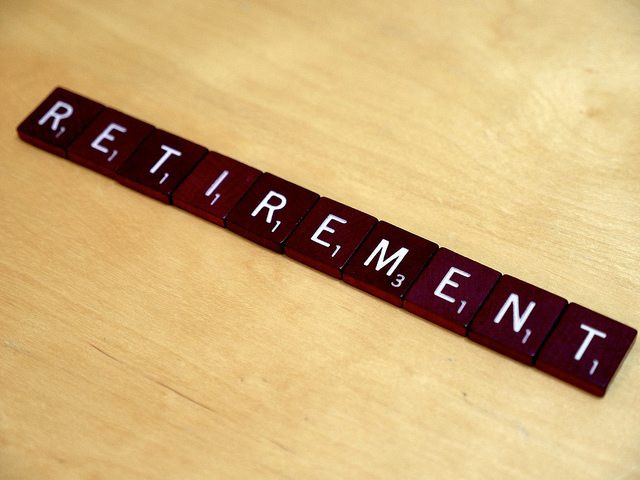Five Steps to a Comfortable, Secure, and Enjoyable Retirement, by Rick Viader

Retirement planning is a multi-step process that develops over time. For a comfortable, secure, and enjoyable retirement, you must first establish the financial cushion that will cover all that. The enjoyable part is why its essential to pay attention to the serious, and maybe dull, part: figuring out how to get there.
The first step in retirement planning is thinking about your retirement objectives and how long you have to accomplish them. Then you should look into the many sorts of retirement accounts that could help you raise funds to support your future. You must invest the money you save for it to grow. The last surprise is taxes: If youve got tax deductions for the money youve contributed to retirement accounts over the years, youll face a significant tax charge when you start taking those funds. There are ways to reduce the retirement tax impact while saving for the futureand to continue the process after that day arrives and you do retire.
Well go through all of these issues here. But first, understand the five steps that everyone, regardless of age, should follow to create a good retirement plan.
KEY TAKEAWAYS
- Retirement planning should include establishing time horizons, estimating costs, calculating necessary after-tax returns, assessing risk tolerance, and preparing an estate plan.
- Begin preparing for retirement as soon as possible to capitalize on the power of compounding.
- Younger investors can afford to take more significant risks with their assets, while those nearing retirement should be more careful.
- As retirement plans develop over time, portfolios should be rebalanced, and estate plans should be revised as appropriate.
1. Understand Your Time Frame
Your present age and projected retirement age lay the basis for a successful retirement strategy. The more the time elapsed between now and retirement, the greater the degree of risk your portfolio can tolerate. If youre young and have more than thirty years until retirement, you should put the majority of your money into riskier investments like stocks. Despite volatility, stocks have historically outperformed alternative assets, like bonds, over extended periods. The keyword here is long, which means at least ten years.
You also need returns that outperform inflation to keep your purchasing power in retirement. Think of inflation as an acorn. It starts tiny, but with enough time, it may grow into a massive oak tree. Weve all heard about, and desire, compound growth on our money. On the other hand, inflation is a form of compound anti-growth, as it erodes your moneys value. For 24 years, a relatively low inflation rate of 3% will destroy the value of your savings by 50%. It may not appear to be much each year, but over time, it has a significant impact, according to a financial advisor.
You may not think that saving a few dollars here and there in your twenties means a lot, but the power of compounding will make it much more valuable by the time you need it.
Generally, the older you are, the more your portfolio should be geared toward income and capital preservation. That means a greater allocation to assets such as bonds, which may not produce the same returns as stocks but have less volatility and generate income that can be used to live on. Inflation will also be less of a concern for you. A 64-year-old who plans to retire next year doesnt have the same concerns about rising living costs as a much younger professional who has recently entered the field.
You should divide your retirement strategy into several components. Assume a parent wishes to retire in two years, pay for a childs schooling at 18, and relocate to California. From the standpoint of developing a retirement plan, the investing approach would be divided into three phases: two years until retirement (contributions are still made to the plan), saving and paying for college, and living in California (regular withdrawals to cover living costs). To establish the best allocation approach, a multi-stage retirement plan must consider multiple time horizons and the corresponding liquidity needs. You should also rebalance your portfolio when your time horizon changes.
2. Determine Your Retirement Spending Needs
Having realistic expectations regarding post-retirement spending patterns will help you determine the appropriate size of a retirement portfolio. Most individuals assume that after retirement, their annual spending will be just 70% to 80% of what they spent before. Such an assumption is usually unrealistic, particularly if the mortgage has not been paid off or unexpected medical costs. Retirees may also spend their initial years of retirement spending on travel or other bucket-list items.
I think that the ratio should be closer to 100 percent for retirees to have enough funds for retirement, says David G. Niggel, the CEO of Key Wealth Partners, LLC. Each year, the cost of living rises, particularly health-care costs. People are living longer lives and wish to thrive in their golden years. Retirees require higher income for a longer time; therefore, they must save and invest accordingly.
Since retirees dont work for eight or more hours per day anymore, they have more time to travel, go sightseeing, shop, and indulge in other costly hobbies. Accurate retirement expenditure targets help in the planning process since more spending in the future requires extra savings today.
Your withdrawal rate is one of the most important factors in the longevity of your retirement portfolio. Its critical to estimate your retirement expenses accurately since itll impact how much you withdraw each year and how you invest your account. If you understate your costs, youll easily outlive your portfolio; or if you overstate your expenses, you may not be able to enjoy the sort of retirement lifestyle you desire, says Kevin Michels, a financial planner and president of Medicus Wealth Planning. When planning for retirement, you should also consider your longevity to dont outlive your funds. The average life expectancy is increasing.
Individuals and couples longevity rates can be estimated using actuarial life tables (referred to as longevity risk).
Furthermore, if you plan to buy a home or support your childrens education after retirement, you may need more money than you think. These expenses must be incorporated into the overall retirement plan. Remember to revise your plan at least once a year to ensure youre on track with your savings. You can improve retirement-planning accuracy by specifying and estimating early retirement activities, accounting for unexpected costs in middle retirement, and considering what-if late-retirement medical expenses, says Alex Whitehouse, president and CEO of Whitehouse Wealth Management.
3. Determine the After-Tax Rate of Return on Investments
After determining the projected time horizons and spending requirements, the real after-tax rate of return must be computed to evaluate the feasibility of the portfolio providing the required income. A required rate of return of more than 10% (before taxes) is usually an unreasonable goal, even for long-term investing. As you get older, your return threshold decreases since low-risk retirement portfolios are mostly made up of low-yielding fixed-income assets.
If, for instance, a person has a $400,000 retirement portfolio and income needs of $50,000, assuming no taxes and portfolio balance preservation, they are relying on an excessive 12.5 percent return to get by. The significant benefit of retirement planning at a young age is that someone may develop the portfolio to provide a reasonable rate of return. Using a $1 million gross retirement investment account, the expected return is a much more realistic 5%.
Investment returns are generally taxed depending on the sort of retirement account you have. Thus, the actual rate of return must be calculated after taxes. However, knowing your tax position when you start withdrawing assets is essential for the retirement-planning process.
4. Compare Risk Tolerance to Investment Goals
Whether youre in charge of the investment decisions or a professional money manager, a reasonable portfolio allocation that balances the issues of risk aversion and returns targets is perhaps the essential stage in retirement planning. How much risk are you prepared to accept to achieve your goals? Should part of the income be put away in risk-free Treasury bonds to cover necessary expenses?
You must ensure that youre comfortable with the risks in your portfolio and understand what a necessity is and what is a luxury. That should be discussed carefully, not just with your financial counselor but also with your family members. Dont be a micro-manager who reacts to everyday market noise, advises Craig L. Israelsen, a designer at 7Twelve Portfolio. Helicopter investors tend to over-manage their investments. When several mutual funds in your portfolio have a terrible year, increase your investment in them. Its similar to parenting: the child that requires your affection the most usually deserves it the least. Portfolios are comparable. Dont give up on the mutual fund youre upset with this year; it may be the greatest performer in the next one.
Markets go through long up and down cycles, and if youre investing money you wont need to tap into for 40 years, you can afford to see your portfolio value increase and decrease with those cycles, says John R. Frye, CIO, and co-founder of Crane Asset Management, LLC. When the market falls, buy rather than sell. Refuse to succumb to the panic. Youd want to buy clothes if they were on sale for 20% off, right? Why not stocks if they were on 20% off sale?
5. Stay on Top of Estate Planning
Another critical stage in a well-rounded retirement plan is estate planning, and each part needs the knowledge of experts, like attorneys and accountants, in that specialized sector. Life insurance is also an essential component of estate planning and retirement planning. Having a comprehensive estate plan in place, as well as life insurance coverage, guarantees that your assets are dispersed in the way of your choosing and that your loved ones wont face financial difficulty after your death. A well-thought-out strategy also assists in avoiding a costly and often time-consuming probate process.
Another important aspect of estate planning is tax planning. If a person intends to leave assets to family members or a charity, the tax consequences of either gifting or transferring them through the estate process must be weighed.
A typical retirement-plan investing strategy provides returns that cover annual inflation-adjusted living costs while protecting the portfolios value. The portfolio is subsequently passed to the deceaseds beneficiaries. You should contact a tax advisor to establish the best approach for the individual.
Estate planning will change over the course of an investors lifetime. Powers of attorney and wills must be established early on. When you start a family, a trust may become an essential part of your financial plan. How you want your money distributed later in life will be critical in terms of cost and taxes, says Mark T. Hebner, founder and president of Index Fund Advisors, Inc. Collaborating with a fee-only estate planning lawyer can help you prepare and maintain this element of your overall financial plan.
The Bottom Line
Individuals are bearing a more significant burden of retirement preparation than ever before. Few employees, particularly in the private sector, can rely on an employer-provided defined-benefit pension. The transition to defined contribution plans, like 401(k)s, also implies that investment management becomes your responsibility rather than your employers.
One of the most challenging parts of developing a comprehensive retirement plan is balancing reasonable return expectations with the desired life standard. The ideal option is to create a flexible portfolio that can be adjusted regularly to reflect changing market circumstances and retirement goals.






